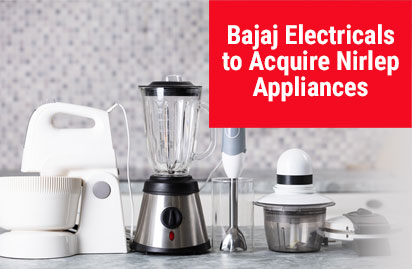The growth of the Lithium-ion battery manufacturing industry, comes as no surprise since there are numerous advantages to using lithium ion batteries. From its wide range of applicability in devices such as smartphones, electronic vehicles laptops etc. to many other uses and benefits, this industry is booming at an exponential rate. It is because of this reason also that the Government has sought to invest in several subsidies in this area. A lot of investments within this sector have taken place in the recent past. This can be again, attributed to its benefits, which have been enumerated below.
Advantages of Li-on technology:-
- Energy density- The energy density of lithium ion batteries is extremely high, making this one of its primary attractions. Devices like our mobile phones need to operate for longer periods of time while not on charge. This consumes considerable amount of power and thus a battery made out of lithium-ion would provide a much higher density of power. Other devices like the electric vehicle, also require a much higher density of power for its batteries and thus lithium ion provides this very requirement.
- Rate of self-discharge- One of the main concerns amongst other batteries is the rate at which they discharge by themselves. Lithium ion batteries on the other hand, discharge at a much slower rate. The pattern of self-discharge is around 5% during the first 4 hours after being charged but only falls by another 1-2 percent in a month.
- Maintenance As opposed to other battery cells such as Ni-Cad, it has been observed that lithium-ion does not require high maintenance as a pre-requisite for higher performance. Lithium-ion on the other hand, does not require this process or any other maintenance procedures either. Further, it can be determined clearly that no active maintenance is required for lithium ions such as battery acid topping etc. either making it highly viable for long term and cost effective use.
- Voltage: Each lithium ion cell produces about 3.6 volts which is way higher than those of nickel cadium, nickel metal hydride or even basic alkaline cells which stand at about 1.5 volts and lead acid at around 2 volts per cell. Thus the voltage of lithium ion cells is much higher, requiring lesser cells in battery applications. For example, only a single cell is required for smartphones thereby making its power management very easy.
- Load: Characteristics regarding to load for lithium-ion are very impressive since it provides 3.6 volts per cell before its last charge ends.
- No priming requirement: Most rechargeable cells need to be primed when they receive their first charge. Lithium ion batteries do not come with this pre-requisite since they are supplied operational and ready to go from the beginning.
- Variety: There are many lithium ion cells available. This is highly advantageous and would mean that the right technology can be used for any particular application easily. The various forms of lithium ion batteries provide a high current density and are thus ideal for consumer mobile electronic equipment. The other categories are able to provide much higher current levels and are ideal for power tools and electric vehicles as well.
Government’s Initiatives for Li-ion batteries
- The Government has completely restructures the FAME 2 benefits for EVs with Lithium-ion and better chemistry batteries while excluding lead-acid battery-powered vehicles.
- It has also increased the import duty on lithium-ion cells to 10% from the previous 5% from April 2021.
- It is also increasing the import duty on assembled battery packs from 5% to 15% from April 2021.
- The Government had set up the National Mission on Transformative Mobility and Battery Storage in 2019 to drive mobility initiatives with a view to set up large scale manufacturing plants for cells, batteries and other components of the EV value chain in India.
- An estimated tender worth USD $50 billion is expected to be floated for global investors to set up a 50 GW battery manufacturing base under the ‘Make in India’ initiative. NITI Aayog is set to seek proposals from various states to identify a total of 5-20 locations within the country. These companies will be required to set up the manufacturing facilities by the year 2022, after which they will get the incentives for eight years till the year 2030.
- India and Bolivia have also entered into a partnership wherein India is to invest in developing Bolivia’s lithium deposits and Bolivia in turn, is to facilitate the supply of lithium, lithium carbonate and cobalt to India. The MOU between the two countries is set to foster alliances for lithium battery/cell production plants in India and the possibility of Indian companies setting up production capabilities in Bolivia. This will further boost the growth of lithium-ion usage.
- Furthermore, three different Lithium-ion battery manufacturers are also expected to set up units with a combined capacity of 10 gigawatts in Telangana, with an investment of Rs 1,500 crore in the first phase and a total investment of Rs 6000 crore by the end.
The above are some of the initiatives undertaken by the Government towards fostering the growth and usage of lithium ion batteries in various devices. Further, the electronics industry in general is set to witness a huge boost due to newer subsidies and higher investments. These have been enumerated further, below.
Process of applications for Subsidies and Incentives under the Electronics Department of the Government
1. Production Linked Incentive Scheme (PLI) for Large Scale Electronics Manufacturing
There is a lack of level playing field when it comes to the domestic electronics hardware manufacturing sector when we compare it with other nations. This sector suffers from a disability of around 8.5% to 11%due to lack of adequate infrastructure, domestic supply chains as well as logistics, the high cost of finance, inadequacy in quality power, limited design capabilities and focus on only R&D by the industry coupled with inadequacies in skill development in the arena. The goal of National Policy on Electronics 2019 (NPE 2019) was to position India as a global hub for Electronics System Design and Manufacturing (ESDM) by encouraging and driving the country towards development of its core components and an enabling environment for the industry to compete in worldwide
Production Linked Incentive Scheme (PLI) for Large Scale Electronics Manufacturing The scheme offers production linked incentives to boost domestic manufacturing and attract large investments within the mobile phone manufacturing and specified electronic components industry, including Assembly, Testing, Marking and Packaging (ATMP) units. The scheme shall extend an incentive of 4% to 6% on incremental sales of goods manufactured within the country and covered within certain target segments and eligible companies, for a period of five (5) years subsequent to the base year.The Scheme is open for applications for a period of 4 months initially which may be extended further as well. Furthermore, support under the Scheme shall be provided for a period of five (5) years subsequent to the base year.
This Scheme will be implemented through a Nodal Agency which shall act as a Project Management Agency (PMA) and shall be responsible for providing secretarial, managerial and implementation support and it shall also carry out other responsibilities as assigned by MeitY.
Process of Application:
- The Scheme is open for applications till 31.07.2020 which may be extended. The Scheme can also be reopened for applications anytime during its tenure based on the response from the industry.
- An application under this Scheme can be made to MeitY/Project Management Agency (PMA) by any company which has been registered within India. Further the number of applications allowed under this scheme is restricted to one.
- Every application will be limited to one of the Target Segments. But an applicant can make another application for a specific Target Segment if the previous application had been rejected and closed by MeitY or the PMA after its examination.
- Incentives can only be given to the approved applicants. Further, the application has to be made in the format provided within the Guidelines of this scheme and the process mentioned within its guidelines.
- Once the application is received in the above mentioned format by MeitY/PMA, it will be examined to check if the application meets the criteria given in the guidelines. This examinations will be completed within 15 days from the receipt of the application. Further, no original application shall be accepted after the end of the application window.
- If the above mentioned original application is found to be incomplete then Meity/PMA shall inform the applicant of the same within 15 days from the receipt of the application and the applicant must complete the process within 10 days of receiving communication of such an error, failing which, the window shall be closed for application.
- If the original application completely meets the criteria prescribed within the guidelines, then MeitY/PMA shall send an acknowledgement within 15 days from the receipt of this application and in case the original or even the revised application does not meet the eligibility criteria, the same shall be denied within 15 days as well.
- The applicant is required to pay a non-refundable application fee for every application, which is prescribed within the guidelines and accepted electronically. Further applications received during the window of applying shall be appraised on an ongoing basis.
Eligibility for the subsidy:
- After the conclusion of all the applications, approvals are granted to not more than 5 eligible applicants within the Target Segments of mobile phones with an invoice value of Rs. 15000 and above ; not more than 5 applicants within the Target Segment of Mobile Phones from Domestic Companies; not more than 10 applicants from the Target Segment of “Specified Electronic Companies”.
2. Scheme for Promotion of Manufacturing of Electronic Components and Semiconductors (SPECS)
The development of supply chains is important for the manufacture of electronic products with higher domestic value addition in the country. The goal of the National Policy on Electronics 2019 (NPE 2019) is to position India as a global hub for Electronics System Design and Manufacturing (ESDM) by encouraging and driving capabilities within the country for the development of core components, including chipsets, and the creation of an enabling environment for the industry to compete in worldwide.
Electronic components are the basic building blocks for any Electronics Industry and thus represent maximum value addition. Hence, a vibrant electronic components manufacturing ecosystem is essential for the overall sustainable growth of electronics manufacturing in India.
The Scheme for Promotion of Manufacturing of Electronic Components and Semiconductors (SPECS) This scheme will help offset the disability for domestic manufacturing of electronic components and semiconductors in order to strengthen the electronics manufacturing ecosystem within the country.
It will provide financial incentives of 25% upon capital expenditure for the identified list of electronic goods which comprise of a downstream value chain of electronic products, i.e., electronic components, semiconductor/ display fabrication units, ATMP units, specialized sub-assemblies as well as capital goods for the manufacture of the aforesaid goods, which involve high value added manufacturing in its structure.
This Scheme shall also apply to investments within new units and expansion of capacity/ modernization and diversification of existing units for furthering their development. Applications under this Scheme can be made by any entity registered in India.
The capital expenditure shall equal the total expenditure in plant, machinery, equipment, associated utilities and technology, including for Research & Development (R&D).
Moreover, this Scheme is open for applications initially for a period of 3 years from the date of its notification. And, incentives under this Scheme will be applicable from the date of acknowledgment of the application. These incentives will be available for investments made within 5 years from the date of acknowledgement of application for the above.
This Scheme will also be implemented through a nodal agency which shall act as Project Management Agency (PMA) and shall be responsible for the provision of secretarial, managerial and implementation support.
Process of Application:
- Applications can be made to the PMA by any legal entity like a Private Limited Company, Public Limited Company, Sole Proprietorship, Partnership and a Limited Liability Partnership registered in India.
- The application shall be made in the format as prescribed within the SPECS guidelines. Further the application must contain all the requisite land documents like the sale deed and/or registered rent/lease agreement over the land for a period of atleast 10 years from the date of application. If the land is taken on rent or lease for a period of less than 10 years then the application shall be processed only if there is a renewal clause for the extension of such a lease or rent and if such an extension is not present then the same is referred to the PMA to the Governing Council on whether this application should beb approved or denied.
- If the land hasn’t been purchased or taken on rent/lease while applying for the subsidy, the applicant must provide details regarding the location and the plot with suitable documents which support the availability of the land at the time of making the application.
- The application shall also comprise of Financial Closures for the investment required to finish the project. Further, there are no restrictions on making multiple applications under this scheme. Investments by entities other than the applicant’s shall also not be considered when determining the eligible capital expenditure under the scheme.
- Upon the receipt of the application the PMA shall examine it. This examination shall be concluded within 15 working days of receipt of the application or 15 working days in case of any revised application. No original application will be accepted after the closing of the application period.
- If the application is found to be incomplete then the PMA must send it to the applicant for rectification within 15 days of receipt of this application and the applicant in turn must send it back with full details within 15 days of receipt of the returned application.
- If the application meets all the criteria prescribed within the guidelines then the PMA shall issue an acknowledgement within 15 days from the receipt of this application. However, an acknowledgement must not be misconstrued as an approval. In case the application is found incomplete or lacking in any regard during the post examination process after sending of acknowledgement then the PMA shall inform the applicant of the same as well within 15 days of such discovery.
- A non-refundable application fee shall be paid by the applicant electronically.
- No application which is received three years after the date of notification shall be considered for approval.
Incentive under the scheme:The total amount of incentive payable towards the project shall only be assessed upon the basis of the eligible capital expenditure which is communicated by the PMA within the approval under the scheme, sent to the applicant.
3. Modified Electronics Manufacturing Clusters (EMC 2.0) Scheme
In order to remove the impediments faced by industries with regards to quality infrastructure and the development of a robust electronics manufacturing ecosystem within the country, the Modified Electronics Manufacturing Clusters (EMC 2.0) Scheme had been notified by the Government vide a Gazette Notification on April 01, 2020. The objective of this scheme was to address the disabilities, by providing a support system for the creation of world class infrastructure along with the common facilities and amenities, including Ready Built Factory (RBF) sheds / Plug and Play facilities etc. for attracting the global electronics manufacturers along with their supply chains for establishing their units in India.
This Scheme will provide a solid link between the domestic and international markets by strengthening the supply chain responsiveness, the consolidation of suppliers, decreased time-to-market ratio, lower logistics costs, etc.
The EMC 2.0 Scheme seeks to provide financial assistance for the setting up of of both EMC projects and Common Facility Centres (CFCs) across the country. It is open for receipt of applications for a period of 3 years from the date of notification. A further period of 5 years is available for disbursement of funds to the approved projects as well.
Applications shall be made by the Project Implementing Agency (PIA) which cpuld be he State Government or a State Implementing Agency (SIA) or a Central Public Sector Unit (CPSU) or a State Public Sector Unit (SPSU) or an Industrial Corridor Development Corporation (ICDC) such as DMICDC, etc.
All such applications received under the EMC 2.0 Scheme via the Project Management Agency (PMA) shall be considered by the Project Review Committee (PRC) for giving its recommendations to the PMA for according approvals or rejections.
Application process:
- Applications under the Scheme are submitted to the PMA in the prescribed format given within the guidelines. However, certain pre-requisites pertaing to land requirements, detailed project reports, the cost estimation, the source of funding for the financial closure of the project, project implementation timelines, the anchor units, investments, employment generation as well as machines and equipments which have to be looked into for compliance as per the details given within the EMC guideline.
- In case of CFC applications, details of atleast 5 electronics manufacturing units identified as users of the facility along with their current status of production, requirement of the facilities and expected revenue generation from use of such facilities should be indicated.
4. Electronic Manufacturing Clusters (EMC)
The Electronics Manufacturing Clusters (EMC) scheme was notified vide notification dated 22nd October, 2012 for providing essential support for the creation of world-class infrastructure to attract investments within the Electronics Systems Design and Manufacturing (ESDM) Sector. To ensure the effective functioning of the scheme, a set of guidelines for the operationalization of the EMC scheme was issued on 15th April 2013. The guidelines for EMC containsthe requisite project parameters, the detailed terms and conditions of the scheme along with the application forms for making preliminary and final applications fpr the same. The EMC scheme provides grant assistance for establishing both Greenfield and Brownfield EMCs across the country. The financial assistance provided under the scheme is in the form of grant-in-aid only and this Scheme is open for 5 years for the receipt of applications.
Applications can be made by an SPV which is created for this very purpose or by a chief promoter who may be a public sector or a private sector entity. All the applications received under the EMC scheme are considered by the Steering Committee for Cluster (SCC) for giving its recommendations to the Government for final approvals.
5. Modified Special Incentive Package Scheme (M-SIPS)
In order to offset any disability and to attract more investments within Electronic manufacturing, the Modified Special Incentive Package Scheme (M-SIPS) was introduced on 27.7.2012. This scheme is available for new projects as well as old projects seeking expansion. It provides a capital subsidy of 20 % in SEZ (25% in non-SEZ) for units engaged in manufacture of electronics. It also reimburses the CVD/excise for capital equipment for non SEZ units. Further, it provides reimbursement of Central taxes and duties for high capital investment projects like fabs as well. The incentives are available for 29 electronic verticals and units all across the manufacturing value chain are covered under this scheme.
For every product category, an investment threshold is prescribed which the applicant has to incur for being eligible for incentives. The investment threshold varies between Rs 1 Crore to Rs 5000 Crores depending upon the type of the project. The incentives are available for 10 years from the date of approval. This scheme was initially opened for 3 years till 26-07-2015, however, the scheme was amended on August 3, 2015. The amendments include the following changes:-
(i) The terms of the scheme have been extended upto 31.12.2018.
(ii) The scope of the scheme has been extended to cover additional verticals.
(iii) The procedure for grant of approval has been simplified and streamlined and the incentives are now available for investments made in projects within a period of 10 years from the date of application
The M-SIPS requires applicants to submit applications with Financial Closures (tied up funds) for the project they propose to execute. The Financial Closure for a project, however, can be given in phases for the same.
In order to consider applications under this scheme and to submit it’s recommendations, an Appraisal Committee headed by Additional Secretary of DeitY has been constituted.
Further, the non- refundable application fee which is required to be submitted along with the application form has been separately notified. This varies from Rs 10,000/- for projects costing less than 10 crores to Rs 1,00,000/- for projects costing 10,000 crores and above.
Governmental action to push electronics manufacturing in India
As of February, 2020 the Centre is introducing a Rs 45,000-crore fund for large firms like Apple, Samsung, Huawei, Oppo and Vivo, besides contract manufacturers like Foxconn and Wistron, so as to make them bring their global supply chains to India and make the country an electronics manufacturing hub within a period of five years from now. Inter-ministerial actions have also been taken on this regard.
Further, out of the 45,000 crore fund about Rs. 41000 crore would be given to companies on the basis of Production Linked Incentives (PLI) criteria and the rest of the Rs. 4000 crore shall be given either under a proposed capital subsidy or a reimbursement scheme. This proposed scheme will seek to replace the Modified Special Incentive Package Scheme (M-SIPS), given above.






